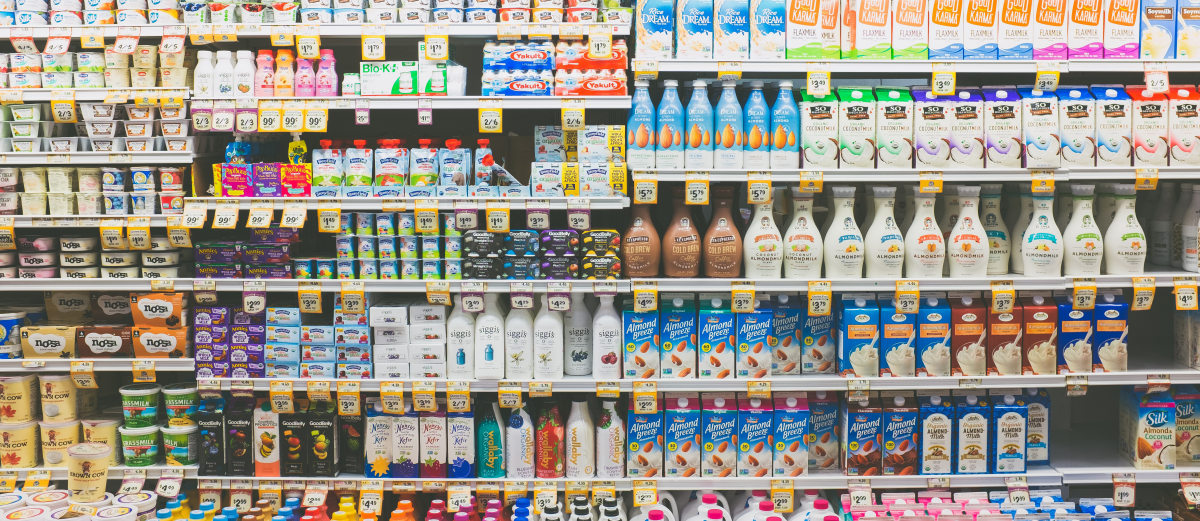Consumers are rapidly switching from offline to online stores, forcing physical stores to compete with online businesses that are able to offer products at any time in any place at low(er) margins.
Physical retail is forced to optimize processes and offer customers a more engaging experience than in the online world.
At DSL, we believe that the use of data can play a major role in the success of businesses in physical retail.
In this article, we discuss in what ways, within physical retail stores, data can be collected and present a number of AI use cases in which this data is used to create added value within different departments of the enterprise.
Customer data
It sounds illogical.
In an offline store, hundreds of customers physically visit every day; the store staff sees who is walking around the store, hears who is interested in what, and has direct contact when a customer makes a purchase.
In an online store, the staff rarely comes into direct contact with the customer.
Yet it is a lot easier for an online store to collect data about their customers.
Customers within an online environment can be tracked from the moment they click on an ad until after they leave the Web shop.
Every click to a product, category page or shopping cart, for example, can be recorded.
As a result, there are numerous data science applications in the online environment to form a detailed customer view and thus target customers to provide a personalized experience.
The challenge in physical retail is that staff often have a good picture of the customer base in their branch, but this knowledge is qualitative and cannot be converted into actionable data.
As a result, knowledge cannot be structurally exchanged with other branches, while promotional, assortment and operations decisions are made organization-wide.
In addition, POS systems collect a lot of transactional data, but the AI capabilities for this are limited because purchases cannot be linked to a person.
Fortunately, however, even in the physical store there are ways to collect quantitative data on customers and link purchases on a large scale.
Most retail businesses have already started using it: the loyalty program.
By encouraging customers to have their loyalty card or app scanned with a purchase, an identity is linked to a purchase.
This provides insight into how often customers return and what types of products are purchased by the same person.
With this, AI applications such as a recommender system and churn prediction are already possible.
If you encourage the customer to reveal some more demographic data about him or herself, you can link a customer’s behavior to his or her characteristics.
This makes it possible to segment customers and approach them in a targeted and personal way.
If you also link an app to the loyalty program, you can track every interaction a customer has with that app.
There are also a number of options for collecting data from customers who do not make a purchase.
These range from simple gates that count incoming customers, to more advanced methods such as cameras that record walking routes or can recognize a customer’s age and gender.
Although we separate physical retail from online retail in this article, the majority of physical retail businesses also have a web shop.
The data collected in the online store can be used to optimize the physical store.
So there is also the opportunity to collect large amounts of data in physical retail.
In the rest of this article, we will discuss some examples of how we would put this data to use.
Product recommendations
To maximize sales, it is common in retail to sell more to customers through cross-selling.
It is also better for the customer experience when products that are often bought together are not too far apart.
With AI, you can gain insight into products that are often purchased together (tying) and which products customers are additionally interested in, given that they have purchased a particular product.
When linking different purchases from a customer is not an option, valuable insights can still be extracted from sales data.
With a Market Basket Analysis, relationships between differences products can be identified in a large volume of past transactions.
Using statistical models, it discovers which products are often purchased together and calculates the likelihood of a product being purchased together with another item.
Based on these insights, it can determine which products should be placed together to promote cross-selling.
It can also be built into POS systems that if a customer buys only one product from a frequently occurring combination, the cashier will be shown which product would also be of interest to this customer.
This allows another targeted recommendation to be made during the sale.
In addition, such models can be used to determine which products could be put on sale: promoting the right products can then boost sales of products linked to them according to the market basket model.
With a loyalty program, different purchases by a customer are linked.
With a recommender system it is possible to make better product recommendations.
Whereas a Market Basket Analysis only looks at which products are bought within one transaction, a recommender system looks at the products a customer has bought in the past or that similar customers have bought.
There are two categories of recommender systems: collaborative filtering & content-based.
In collaborative filtering, based on a customer’s purchases, similar customers are found.
If the customer has not yet purchased a product that these similar customers bought, that product is recommended.
Thus, this method does not involve linking to a customer profile.
Content-based methods use additional information about the customer (e.g., age and gender) or the product (e.g., price and category).
Based on this, a model is built that tries to explain relationships between customers and products (e.g., women between 25 and 45 tend to buy high price range items from the home category). Then a person with certain characteristics may be recommended a particular product.
This method requires a customer to provide additional information about themselves.
However, the advantage over collaborative filtering is that a customer can get a relevant product recommendation even without previous purchases.
A product recommendation can be made at checkout when a customer’s loyalty card is scanned. If an e-mail address is known, customers can be reached even when they are not in the store and an appropriate product recommendation can encourage a customer to visit the store.
Analysis with computer vision
As described previously, collecting data on store visitors is challenging.
A target group is often formed organization-wide and on “gut feeling” or with inefficient methods (such as surveys).
Walking routes and customer behavior are broadly known to staff, but not measured structurally.
We already disclosed that this data can be collected with cameras.
Using computer vision, camera images can be converted into quantitative data.
Cameras with facial recognition make it possible to estimate gender and age for each store visitor.
It is also possible to record whether a visitor enters alone or with several people.
In this way, a clear target group can be formed for each branch.
In addition, for different customer segments, what time and how long they store can be measured.
Does a branch in a village area attract a different type of audience in the morning than a branch in the city?
Do visitors at lunchtime come mainly from between 25 and 45 years old, who stay for a short time and buy little?
Do families especially come on Saturdays?
With insight into visitors per branch by time of day, promotions can be designed by branch and customer segment.
In addition to estimating age and gender, cameras can also record walking routes of store visitors.
What route does a customer take to get to the product he or she is going to buy?
How do shoppers who end up not buying anything move through the store?
Is the entire store utilized or do visitors rarely get past the first aisles?
With insight into walking routes, store layouts can be optimized.
Because the data comes in continuously, the effect of an adjustment can be measured immediately.
In addition, by means of A/B testing, where, for example, store A is given a new layout and store B remains unchanged, new store designs can be experimented with.
With computer vision, actions of store visitors can also be recorded.
What do customers do with the products in the store?
How often is a product picked up and put back, and how does this relate to sales of the product?
Are products at a certain height on the shelf viewed and picked up more often?
With this information, decisions about product placement on product shelves can be made data-driven.
Again, different shelf layouts can be experimented with to make an informed decision.
Of course, privacy laws must be observed when using computer vision in cameras.
Personal information should not be stored without consent, and the last thing you want as a retailer is store visits that stay out for privacy reasons.
By storing only the established age and gender data, and not the recorded face, you avoid data traceable to a person and there is no privacy-sensitive data.
Demand prediction with machine learning
Accurate demand forecasting is important for any retail business.
Too high a forecast leads to more capital in inventory and higher storage costs than necessary.
Too low a forecast leads to no-sales to customers.
In addition, a good demand forecast allows for proper budgeting.
However, making a good forecast is not easy.
Many varying factors, from weather fluctuations, competition, availability (online/offline), type of store to new product reviews, affect whether or not customers come to your store and make a purchase.
Predicting demand has been done for ages with traditional statistical methods, such as time series analysis.
Often these methods are suitable for companies that operate in a stable market and sell products with a long life cycle.
A disadvantage of these methods is that they are based solely on historical sales data and assume that something that happened in year one will repeat in year two.
They are less suited to a dynamic market and not suitable for predicting demand for products not yet sold.
Prediction models with machine learning are based on statistical models, but can use additional internal and external data sources (e.g., weather data, economic indicators, social media reviews, etc.).
They apply complex algorithms that can detect more than just linear relationships.
Instead of a one-time prediction at the beginning of the year, machine learning models can automatically retrain and adapt to changing conditions.
Conclusion
So even in physical retail, it is possible to collect large amounts of customer data.
In this article we have presented only a part of AI possibilities with this data.
We are convinced that applying AI can create enormous added value in physical retail as well!
Contact us about the possibilities for your organization!



